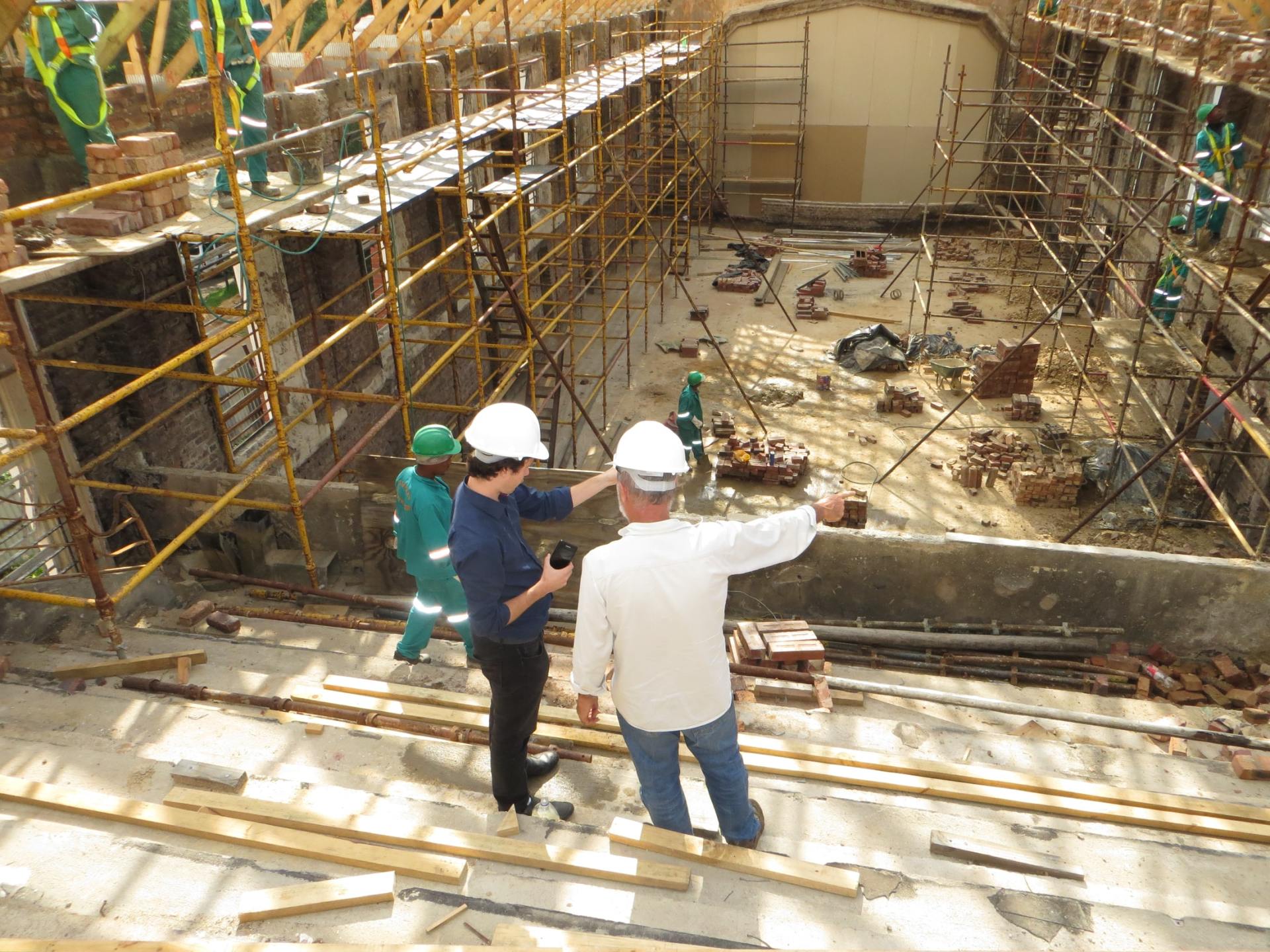Construction Trades Under the Trump Administration
Strategic Considerations for Construction Trades Under the New Trump Administration
As the Trump administration implements its policies, midsize construction contractors in Florida face unique opportunities and challenges. During the Biden Administration, Florida has enjoyed a vibrant construction sector, fueled by strong migration from other states and excess funds from Government spending programs. While proposed regulatory and tax changes present additional support for a robust construction sector, changes in migration and potential labor shortages could throw a wet blanket on the party.
Florida may encounter shifts as the economies in other states become more favorable, potentially slowing the inflow of new residents and businesses. This slowdown could dampen demand for residential and commercial construction projects. Key policy areas to monitor include proposed tax reforms, deregulation efforts, labor market dynamics, and the evolving monetary landscape. Contractors must align their strategies to navigate these changes effectively over the next four years.
In this article, we explore some possibilities for the coming administration along with some strategies for consideration.
INCOME TAX POLICY REFORMS: The administration's agenda emphasizes lowering corporate income tax rates and simplifying the tax code. For both C Corporations and pass-through entities such as S corporations and LLCs, potential rate reductions could result in significant savings for business owners.
- Strategic Implications:
- Reassess corporate structure to optimize tax advantages.
- Consider reinvesting tax savings into technology, equipment upgrades, or workforce development to boost competitiveness.
CAPITAL GAINS TAX REDUCTIONS: A key part of the Trump plan is to stimulate investment and bring corporations back to the U.S. through reduction of capital gains taxes. Lowering capital gains tax rates could incentivize investments in construction-related assets.
- Strategic Implications:
- Review investment strategies to capitalize on tax-advantaged opportunities.
- Evaluate asset disposition strategies to maximize after-tax returns.
- Consider your exit strategy. If capital gains taxes are reduced, it may be time to prepare your business for merger or acquisition. This is a multiyear process, so if you are considering it, you need to start preparing the business at least two years in advance.
DEREGULATION INITIATIVES: The administration’s focus on deregulating industries like energy, transportation, and manufacturing could stimulate infrastructure development and create new project opportunities. However, Industries such as technology and finance may face increased scrutiny, indirectly affecting funding availability for large-scale construction projects in Florida.
- Strategic Implications:
- Position the company to enter deregulated markets or expand service offerings within Florida’s metropolitan areas. Understand which industries will benefit and begin marketing yourself in those areas.
- Monitor changes to environmental and safety regulations that could impact project costs and timelines.
- Diversify your client base to minimize exposure to heavily regulated sectors.
LABOR MARKET DYNAMICS: Florida’s construction sector is experiencing labor shortages exacerbated by restrictive immigration policies and demographic shifts. Changes in migration from other states could further impact labor supply and overall demand for new projects.
- Strategic Implications:
- Invest in building relationships with people or organizations that can provide labor.
- Focus your business on work that you can keep running consistently rather than trying to do many different things. Odds are that if you cannot provide consistent work for your field staff, they will be gone, never to return.
- Plan to adjust your pricing and estimates to account for higher labor rates.
- Invest in workforce training and retention programs.
- Explore partnerships with local trade schools, vocational programs, and community colleges to develop a sustainable talent pipeline.
INTERSTATE MIGRATION: We are already seeing a slowdown in the migration of people from states outside of Florida. Queries with Gemini and Chat GPT show net migration into Florida dropped from 2022 (294,064) to 2023 (126,000) and slightly again in 2024 (112,000). Newsweek reports, Florida's population increased by 467,347 between 2023 and 2024, making it the second-highest numeric gain in the country, behind Texas. This was a decrease from 2023, when 194,438 people moved to Florida, and 2022, when 317,923 people moved there. Further, the Consumer Price Index (CPI) and Cost of Living Index for Tampa Florida has risen significantly in recent years from being slightly below the national average in 2021 to above the national average in 2024.
- Strategic Implications:
- It is reasonable to expect that residential construction will slow in Florida in the coming years. Don’t think the boom will last forever.
- We have all seen the increase in prices on everything from groceries to homes and property taxes have skyrocketed along with homeowners and flood insurance rates in many areas. It is reasonable to assume that these factors will both reduce the amount of migration into the state as well as shape the demographics of those migrating inward. It is likely that Florida will see a relatively higher percentage of relatively wealthy individuals into the state, generating more demand for high-end residential homes and a significant drop in mid to lower-end single family homes.
FINANCIAL AND MONETARY CONSIDERATIONS: We can expect to see a lot of change in financial and monetary policy. We will surely see more manipulation of interest rates. We may see tariffs on foreign goods, and there is a lot of discussion around the adoption of a central bank digital currency (CBDC) or shifts toward a gold or silver-backed monetary system could alter financial operations.
- Strategic Implications:
- Tariffs and tax incentives should drive construction of factories and offices in the United States as corporations move operations back home. Florida is a popular state for corporate headquarters and some types of manufacturing. This could well drive strong commercial construction.
- There is a wide range of financial tactics available to construction contractors and the list is growing all the time. You have many options for project funding, management of your retained earnings, and payment to your vendors and subcontractors. Have a financial expert on your team who can help you manage finances to squeeze the most out of every dollar.
- You should strengthen relationships with financial institutions to maintain awareness of monetary trends and implement sound strategies. Make friends with you banker.
- Monitor bond market trends, to predict municipal infrastructure spending.
CONCLUSION: The construction market in Florida is going to change. You had better prepare! The Trump administration’s agenda presents a mix of opportunities and challenges for midsize construction contractors in Florida. We believe it is vitally important to develop a strategy that accounts for this changing marketplace. Companies that understand these changes are likely to experience tremendous success while those that do the same old things are likely to struggle. By staying informed and agile, companies can position themselves to capitalize on favorable tax policies, regulatory changes, and market trends. The potential slowing of migration to Florida as well as an associated shift in demographics underscores the importance of strategic diversification, labor development, and financial planning to sustain growth in this evolving environment.
Recommendations
- Work with your CPA to develop a tax strategy based on the possible scenarios. Consider changing your filing status to a C Corporation.
- Hire a financial consultant to help you build a cash optimization plan accounting for how you leverage your assets, earn interest, leverage buying terms, pay your subs, establish payment terms with your customers, and optimize your tax situation. A small percentage change increase from effectively managing the funds that flow in and out of your business can make all the difference.
- Develop a plan to go after industries that will benefit and prepare for a reduction in lower end residential construction.
- Consider selling your business if capital gains rates are reduced. Again, this is a significant undertaking if done correctly. To get the most for you company, you need to work with someone experienced in mergers and acquisitions, years in advance to ensure your strategy, your contracts, your customer base, your technology, and your staff are attractive to potential buyers.
- Many coastal counties have serious infrastructure problems. If you are in this space, get informed and work on becoming part of the solution.
- Invest in workforce development and technological innovations to address labor shortages. Develop strong relationships with sources of labor and make sure you have a Spanish speaking person on your operations team.
- Consider shifting your focus to something that can rely more on automation and less on labor. Similarly, buying better machines that require fewer laborers could keep you in business and actually cost less.
- Consider launching a commercial services division to take advantage of the massive amount of service work needed to maintain all the commercial properties and infrastructure built over the last two decades.
At Virtus, we help our clients understand and implement the strategies identified above. We provide you with an expert business office from C level to administrative support for a fraction of what it costs to hire in-house. If you need help with these or any other business management topics for your construction company, please let us know. We are here to help.
Auth: G.M. Sieber, Virtus Support Services
© Virtus Support Services LLC. All Rights Reserved
For a PDF copy of this white paper, please contact us at info@virtusss.com








